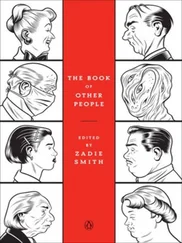– K.P.
16 FAMOUS EVENTS THAT HAPPENED IN THE BATHTUB
POISONING OF PELIAS
According to Greek mythology, Medea murdered Jason’s uncle (Pelias, King of Thessaly) by showing his daughters that they could rejuvenate him if they chopped him up and bathed him in her cauldron of herbs. They believed her, and he died.
MURDER OF AGAMEMNON
Shortly after his return from the Trojan War, the Greek hero Agamemnon was murdered by his wife, Clytemnestra, who struck him twice with an axe while he was relaxing in the tub.
ARCHIMEDES’ DISCOVERY
While soaking in the bathtub, the Greek scientist Archimedes formulated the law of physics — known as the Archimedean principle — that a body immersed in fluid loses weight equal to the weight of the fluid it displaces. He became so excited about his discovery that he rushed out stark naked into the streets of Syracuse, Sicily, shouting ‘Eureka!’ (‘I have found it!’)
BURNING OF ALEXANDRIA
When the Arabs conquered Alexandria, they were alleged to have burned the 700,000 books in the library to keep up the fires in the city’s 4,000 public baths.
QUEEN ANNE’S BURNING BATH
Anne, Queen of Denmark, was the wife of James I of England. In 1615 gases from her mineral bath momentarily ignited, causing Her Majesty great consternation.
FRANKLIN’S PASTIME
Benjamin Franklin is reputed to have imported the first bathtub into America. He improved its design and contemporary reports indicate that he carried on much of his reading and correspondence while soaking in the tub.
MARAT’S ASSASSINATION
Jean-Paul Marat played an active part in the French Revolution. As editor of the journal L’Ami du Peuple , he became known as an advocate of extreme violence. The moderate Girondists were driven out of Paris and took refuge in Normandy. There, some of them met and influenced a young woman called Charlotte Corday. Convinced that Marat must die, she went to Paris and bought a butcher’s knife. When she arrived at Marat’s house on July 13, 1793, he was taking a bath. (He spent many hours in the tub because of a painful skin condition.) Overhearing Corday, he asked to see her. They discussed politics for a few minutes, then Corday drew her knife and stabbed Marat to death in the bathtub.
THE BONAPARTES’ ARGUMENT
While Napoleon was taking a bath one morning in 1803, his brothers Joseph and Lucien rushed in, seething with rage because they had just heard of his plan to sell Louisiana to the Americans. They were furious because he refused to consult the legislature about it. Lucien had worked hard to make Spain return the colony to France and now his work would be for naught. Joseph warned Napoleon that he might end up in exile if he carried out his plan. At this, Napoleon fell back angrily in the tub, splashing water all over Joseph. Napoleon’s valet, who was standing by with hot towels over his arm, crashed to the floor in a dead faint.
WAGNER’S INSPIRATION
Composer Richard Wagner soaked in a tub scented with vast quantities of Mild of Iris perfume for several hours every day while working on his final opera, Parsifal (1882). He insisted that the water be kept hot and heavily perfumed so that he could smell it as he sat at his desk, clad in outlandish silk and fur dressing gowns and surrounded by vials and sachets of exotic scents.
MORPHY’S DEATH
Paul Morphy of New Orleans defeated famous chess players when he was still a child. As an adult, he could play eight games simultaneously while blindfolded. Some people consider him the greatest chess player who ever lived, but from the age of 22 until his death on July 10, 1884, at 47, he played no more chess. Believing that people were trying to poison him or burn his clothes, Morphy became a virtual recluse. On one oppressively hot day he returned from a walk and took a cold bath. In the tub he died from what doctors described as ‘congestion of the brain or apoplexy, which was evidently brought on by the effects of the cold water on his overheated body’.
ROSTAND’S WRITING
Edmond Rostand, French poet and playwright, hated to be interrupted while he was working, but he did not like to turn his friends away. Therefore, he took refuge in the bathtub and wrote there all day, creating such successes as Cyrano de Bergerac (1898).
SMITH’S MURDERS
George Joseph Smith of England earned his living by his almost hypnotic power over women. In 1910 he met Bessie Mundy, married her (without mentioning that he already had a wife) and disappeared with her cash and clothes. Two years later they met by chance and began living together again. After Smith persuaded Bessie to write a will in his favour, he took her to a doctor on the pretence that she suffered from fits. (Both she and the doctor took his word for it.) A few days later she was found dead in the bathtub, a cake of soap clutched in her hand. Everyone assumed she had drowned during an epileptic seizure. Smith married two more women (Alice Burnham and Margaret Lofty), took out insurance policies on their lives and described mysterious ailments to their doctors. They, too, were found dead in their bathtubs. When Alice Burnham’s father read of Margaret Lofty’s death, he was struck by its similarity to his daughter’s untimely end. The police were notified and Smith was tried for murder and sentenced to be executed. His legal wife, Edith, testified at the trial that she could remember only one occasion when Smith himself took a bath.
CARROLL’S ORGY
America was shocked by reports of an orgy on February 22, 1926, at the Earl Carroll Theatre, New York, after a performance of his Vanities . To bring a midnight party to a climax onstage, a bathtub was filled with champagne and a nude model climbed in, while the men lined up and filled their glasses from the tub. This was during the Prohibition era, so a federal grand jury immediately began an inquiry into whether or not the tub really did contain liquor and, if so, who had supplied it. Earl Carroll, the producer who staged the party, was convicted of perjury for telling the grand jury that no wine had been in the bathtub. He was sentenced to a year and a day in prison, plus a $2,000 fine. After he suffered a nervous breakdown on the way to the penitentiary, his fellow prisoners were ordered never to mention bathtubs in his presence.
KING HAAKON’S FALL
On June 29, 1955, the reign of King Haakon VII, who had ruled Norway from the time of its independence in 1905, effectively came to an end when the beloved monarch fell in the royal bathtub at his palace in Oslo. The elderly king lingered on for over two years before succumbing on September 21, 1957, to complications resulting from his fall.
GLENN’S CAREER
The momentum of what contemporary experts considered to be an unstoppable political career was interrupted in 1964 when astronaut hero John Glenn fell in the bathtub and had to withdraw from his race for senator from Ohio. He was finally elected to the Senate in 1974.
MORRISON’S DEATH
Rock idol Jim Morrison was living in exile in an apartment in Paris. On the morning of July 3, 1971, he was found dead in his bathtub. The cause of death was ruled ‘heart failure’. He was 27 years old.
– P.S.H., L.B. & J.Be.
BRUCE FELTON’S WHAT WERE THEY THINKING?
11 OF THE WORST IDEAS IN RECENT HISTORY
Bruce Felton is the co-author of The Best, Worst & Most Unusual: Noteworthy Achievements, Events, Feats & Blunders of Every Conceivable Kind, Felton and Fowler’s Famous Americans You Never Knew Existed and the author of What Were They Thinking?: Really Bad Ideas Throughout History.
Читать дальше












